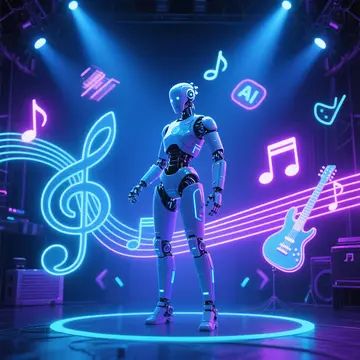Discover how AI-generated music is transforming virtual reality (VR) experiences, enhancing immersion, and creating dynamic soundscapes tailored to user interactions.
Virtual reality (VR) has rapidly evolved to deliver breathtaking visual and interactive experiences. Yet, one critical component often overlooked is audio. Enter AI music—a groundbreaking innovation reshaping how soundtracks and soundscapes are created for VR. By integrating artificial intelligence into music generation, developers can craft adaptive, responsive, and deeply immersive auditory environments that elevate VR experiences to unprecedented heights.

Why AI Music Matters for VR
Traditional pre-composed soundtracks lack the flexibility to adapt to real-time user interactions in VR. AI-generated music solves this by analyzing user behavior, environmental cues, and narrative progression to produce dynamic audio. This ensures that every action—whether exploring a virtual world or engaging in a high-stakes game—is accompanied by music that seamlessly aligns with the experience.
Key Benefits of AI Music in VR
Enhanced Immersion
AI music adapts in real time, creating a cohesive sensory experience. For example, eerie ambient tones might intensify as a user navigates a dark corridor, while uplifting melodies emerge during triumphant moments. This responsiveness keeps users emotionally engaged.Personalized Soundtracks
Machine learning algorithms analyze user preferences and biometric data (e.g., heart rate) to generate music that resonates individually. Imagine a meditation VR app composing calming tunes based on your stress levels or a fitness game matching beats to your workout intensity.Efficient Content Creation
AI tools like Amper Music and AIVA enable developers to generate royalty-free tracks quickly, reducing production costs and timelines. This scalability is vital for indie creators and large studios alike.Dynamic Soundscapes
Unlike static audio loops, AI-driven systems create evolving soundscapes. Raindrops might synchronize with a user’s movements, or orchestral swells could build as a storyline progresses, making every VR session unique.

Optimizing AI Music for VR: Best Practices
Prioritize Low Latency: Ensure AI systems deliver audio with minimal delay to maintain immersion.
Layer Interactive Elements: Combine ambient tracks, sound effects, and adaptive melodies for depth.
Test Across Scenarios: Validate music responsiveness in diverse user interactions and environments.
The Future of AI Music in VR
As AI models like OpenAI’s Jukedeck and Google’s Magenta advance, expect even smarter music generation. Future applications could include cross-platform VR concerts with AI-composed live scores or educational simulations where historical eras are sonically recreated.
Conclusion
AI music is not just a trend—it’s a transformative force for virtual reality. By delivering adaptive, personalized, and scalable audio solutions, AI empowers creators to build richer, more immersive worlds. For developers and businesses in the VR space, embracing AI-generated music is no longer optional; it’s essential to staying competitive in a rapidly evolving industry.
